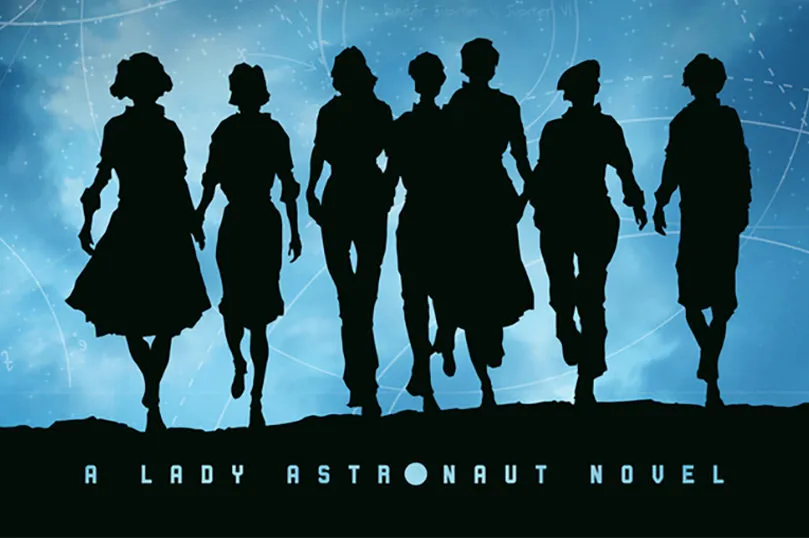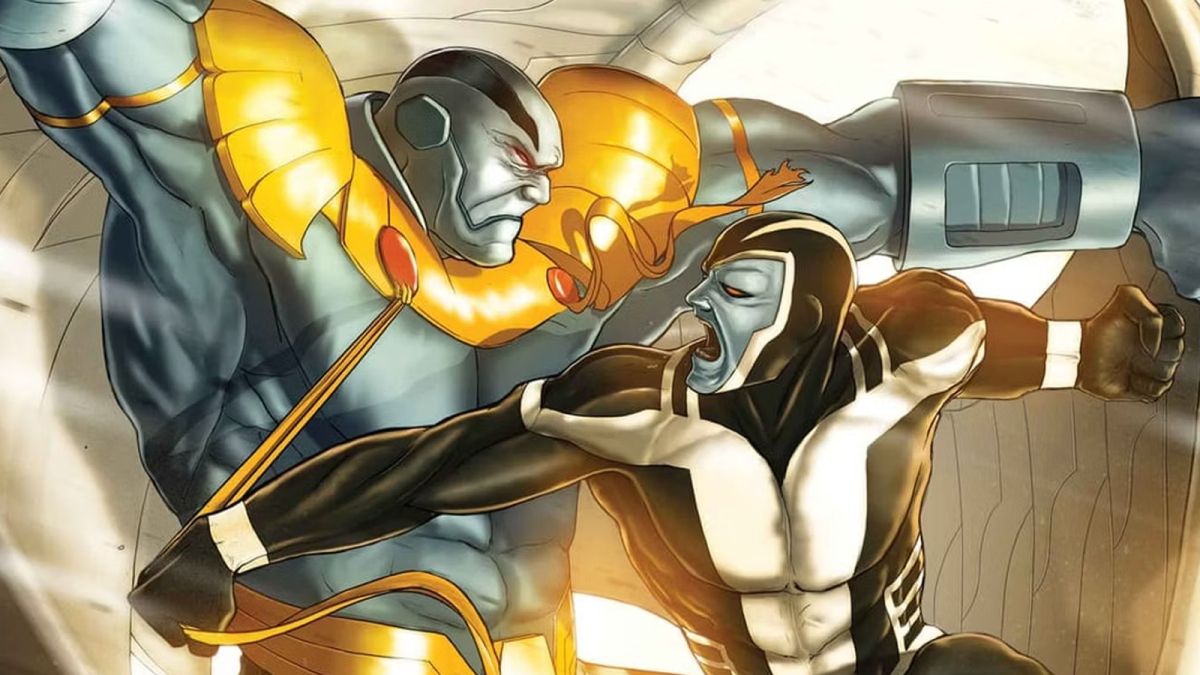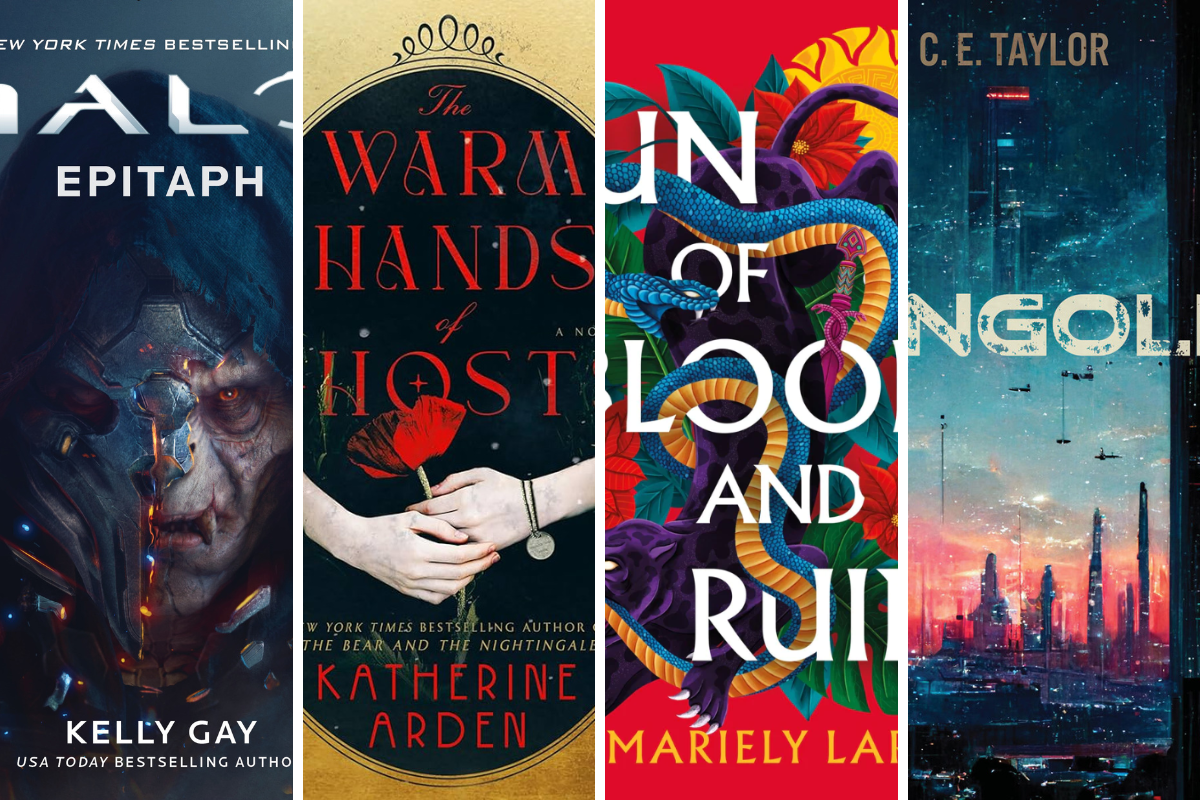There’s so much genre fiction released every year that we’re not sure how to cover it. Consider this review a test run. We want to hear from you about what you’d be interested in when it comes to book coverage. A book club where we let you know what we’re going to be reviewing so you can join the conversation? Reviews of brand new releases? Analysis of books that have been or will be adapted for the screen? Let us know in the comments!
In an alternate version of 1952, a meteorite hits the Atlantic Ocean and triggers a tidal wave and earthquake that annihilates Washington, D.C. and devastates the rest of the East Coast of the United States. Most people urge the fledgling space program to focus on satellites meant to detect and possibly stop future meteors, but a meteorologist and a brilliant mathematician work together to understand the lasting impact the strike is likely to have on Earth. When Elma York finishes her calculations and shares them with her rocket scientist husband Nathaniel, he sums up the situation rather neatly: “We have to get off this fucking planet.”
That’s the thrilling setup for Mary Robinette Kowal’s Hugo- and Nebula-nominated novel The Calculating Stars. The first of two Lady Astronaut novels, the book combines elements of Deep Impact and Hidden Figures for an alternate history procedural where the space race isn’t about competition between Cold War superpowers but the survival of humanity. The timely twist is that the threat doesn’t come from a bigger asteroid but a slow-moving climate apocalypse caused by a blanket of water vapor the meteorite pushed into the atmosphere.
Elma works as a one of the women “human computers” for the space program, which quickly turns into an American-led international effort. While she’s excellent at doing the math needed to calculate trajectories and analyze the effectiveness of new rocket technology, she dreams of going into space herself. Elma was part of the Women Airforce Service Pilots, a real world organization that ferried aircraft during World War II so male pilots could just focus on combat missions. But despite having all the relevant flight experience, Elma and all other women applicants are rejected from the space program. Unwilling to accept that decision, Elma starts a public crusade to get women into space.
The book is meticulously researched, taking real history and science and then twisting things a bit to reflect how the meteorite strike might change events. The meteorite kills everyone in Washington, D.C. so the presidency passes to the secretary of agriculture. He proves to be a strong ally for the space program both because of his understanding of climate science and for his help accelerating the timeline for racial integration because of his Quaker faith. But that doesn’t mean racism is handwaved away so that the book can focus on sexism. Both are constant challenges for Elma and the other survivors of the meteorite impact, starting with a notable preference for evacuating white neighborhoods and continuing by pointing out the long-lasting impacts of discrimination when black astronaut candidates are effectively disqualified because racist policies in place during World War II prevent them from having the requisite flight time.
It’s not always done elegantly. The prose tends to be a bit repetitive, which is especially jarring when Elma is repeatedly confronted with her own privilege on racial issues and considers if she would even notice if it wasn’t for her black friends. Entirely following Elma’s perspective sometimes makes it feel like problems simply evaporate because they’re resolving off-screen. As much as this is meant to be a book about overcoming adversity, it sometimes feels like conflicts have no stakes. For instance, when Elma discovers a senile elderly aunt survived the meteorite strike she volunteers to take her in. There’s a lot of potential in that plot: examining survivor’s guilt, how women’s ambitions can be hurt by their role of caregivers, or even the economic hardships faced by young adults who must also provide for older generations. Instead her aunt just moves in with her brother.
Elma has a serious anxiety disorder, which gets worse as she’s increasingly thrust into the spotlight. Her resistance to seek treatment because it could provide more ammo to the men who view women as “emotionally fragile” leads to a nice side plot exploring how otherwise extremely scientifically minded people can be dismissive of mental health. But it also makes it clear how otherwise perfect Elma is, and how her husband is absolutely flawless. Having Nathaniel be endlessly supportive — even when Elma’s activities negatively impact his own job — is one thing, but he’s also incredibly handsome and loving which leads to one too many groan-inducing sex scenes with extended gags about the state of his “rocket.”
Brandon Sanderson, the prolific author behind the Cosmere series, helped Kowal with her plot and it’s telling that she gives him all the credit for the novel’s best character: Stetson Parker. A World War II pilot with a history of sexual harassment, Parker stands firmly against women astronauts and has the ability to be a huge obstacle for Elma thanks to his status as first man in space. But rather than just being a sexist straw man, he’s a genuinely nuanced character who cares deeply about the space program and who Elma comes to view with grudging respect.
While the characters and writing have their weakness, the overall premise is strong. One of the best scenes in the book is also one of its most relatable, a chance encounter Elma has with a childhood friend when visiting Chicago. Her friend’s husband starts going on about how the coming climate disaster is clearly overblown, a perspective that shocks Elma into realizing that no matter what the scientific consensus says, people will deny what’s not easily observed, particularly if it has the potential to negatively impact their lives. The space program in The Calculating Stars struggles not just with inventing new technologies for colonizing space but with keeping governments and the general public believing in the need for the project so they’ll stay unified rather than falling back on factionalism and self interest.
That all too real conflict could seem depressing, but Kowal’s book is profoundly optimistic. It’s a sweet story of friendship, teamwork, and the ability of humanity to transcend petty prejudices, politics, and base fear to achieve something great. The mix of historical and post-apocalyptic fiction allows her to avoid some of the pitfalls of both. Historical fiction is too often used to give a false sense of satisfaction when dealing with issues like sexism and racism, a sort of “look how far we’ve come” vibe, while post-apocalyptic science fiction feels distant by virtue of a murky transition period between our time and some terrible future. The Calculating Stars is about humanity’s need to leave Earth but feels fundamentally grounded as it both confronts the stories that are often overlooked in our heroic portrayals of the first astronauts and the decidedly modern issue of how to fight climate change. By looking to both the past and our present, Kowal has produced a novel that sheds light on how we can build a better future.





